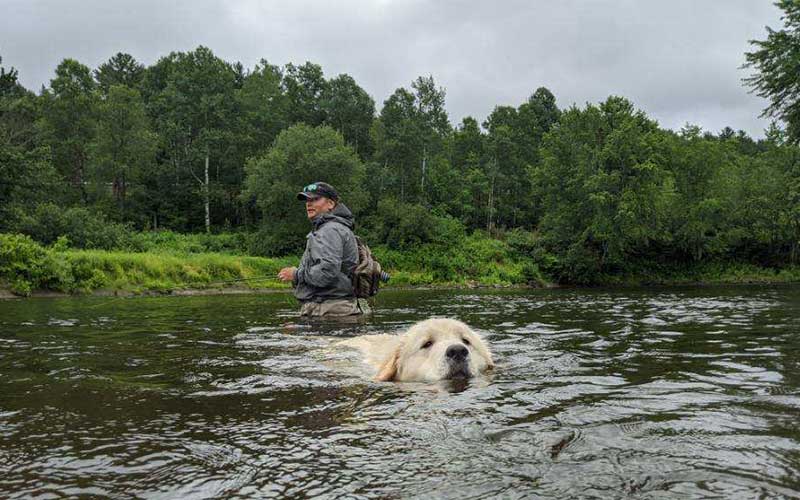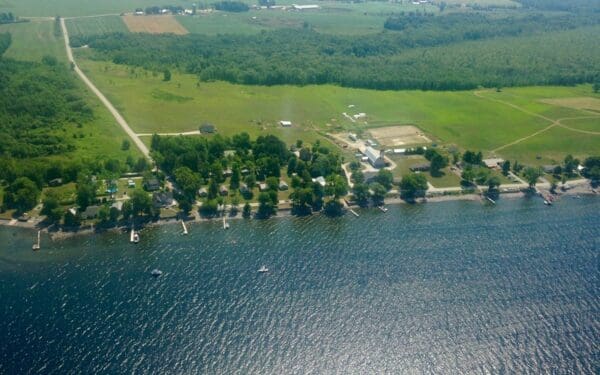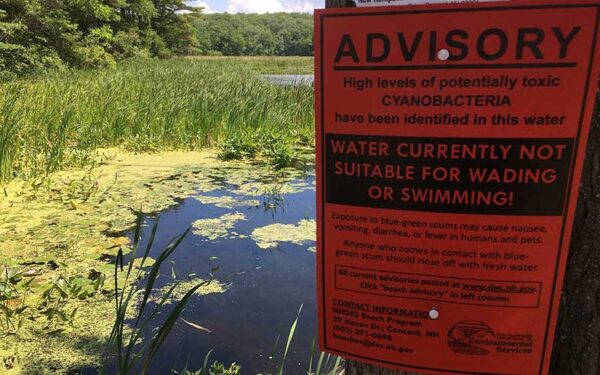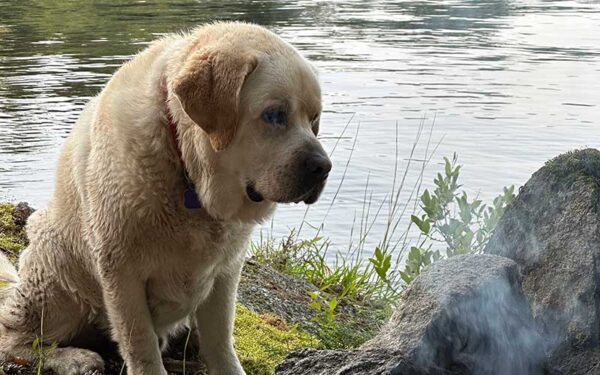
Tilly, a Tall Timber fishing guide's dog, swims in the Connecticut River. These waters are threatened by the Trump administration's rollbacks on waterways across the country. Photo: courtesy of Tom Caron
Tom Caron is a co-owner of Tall Timber, a hunting and fishing lodge at the headwaters of the Connecticut River.
The far reaches of northern New Hampshire are home to the headwaters of New England’s great Connecticut River. At 410 miles in length, the Connecticut forms the boundary of New Hampshire and Vermont, then flows through Massachusetts and Connecticut on its journey to Long Island Sound.
My family’s business, Tall Timber, is a true northern New England fishing and hunting lodge located on those headwaters. We are now in our thirty-eighth year of operation. In one of the least developed and populated towns in New Hampshire, nature is mighty important to the success of our business, as we attract visitors from southern New England that appreciate our area’s natural beauty.
For us that live along it, the Connecticut River is culturally, economically, and recreationally significant, and there is no doubt that it defines our communities and its residents. It is an ever-present symbol of our past, present, and future.
However, the future of the Connecticut and other waters is uncertain. The Trump administration is rolling back protections for waterways across the country, threatening our river and everything it supports.
Finding Solace on the River
For me, the Connecticut River is a reminder of the way things used to be, really how they should be. The river’s flowing beauty helps me forget whatever’s happening, at least for a few hours. Day-to-day cares and concerns, even some responsibilities, drift away on the current while I’m there.
While the fishing is primary to being on the river, just seeing some of the scenery on our property is more than enough. A bald eagle soaring overhead, a magnificent river otter on the search for his next meal, the refreshing sight of mayflies or midges flitting through the cool air, and, of course, the tug of a large trout you may have just fooled. You get the picture — there are a lot of reasons we go to the river.
Rollbacks to the Clean Water Act Will Hurt Our Family Business
Unfortunately, this beautiful scene is threated by the Trump administration. Our surface waters have always faced tests, but the proposed rollback of regulations is the latest threat to the Clean Water Act that will impact our larger surface waters like the Connecticut. Under the Trump administration’s “Dirty Water Rule,” wetlands that do not touch and lack regular surface water connections to the Connecticut River or its tributaries would lose legal protections. That would leave developers free to build on wetlands without a permit and without any chance for the public to voice their concerns. A complex network of these isolated wetlands surround the northern Connecticut River. This new rule increases the risk that these wetlands will be developed or polluted, which would have devastating effects on the larger downstream waters that provide for wildlife biodiversity and human recreation.
Weakening the restrictions placed on development around our secondary waters could have a substantial economic impact on not only our business, but all northern New Hampshire businesses that rely so heavily on a healthy tourist economy.
That’s why I support the Connecticut River Conservancy and Conservation Law Foundation’s efforts to protect our waterways by protecting the Clean Water Act.
Any weakening of the Clean Water Act and the inevitable negative effects on the Connecticut River watershed that I love and enjoy would be a tragedy.
CLF and CRC joined forces with NRDC (Natural Resources Defense Council), Massachusetts Audubon Society, and Merrimack River Watershed Council to sue the Trump Administration for rolling back of protections for wetlands and streams across the United States. Learn more about their lawsuit here.
Read more about why MassAudubon is fighting with CLF to challenge water protection rollbacks here.



